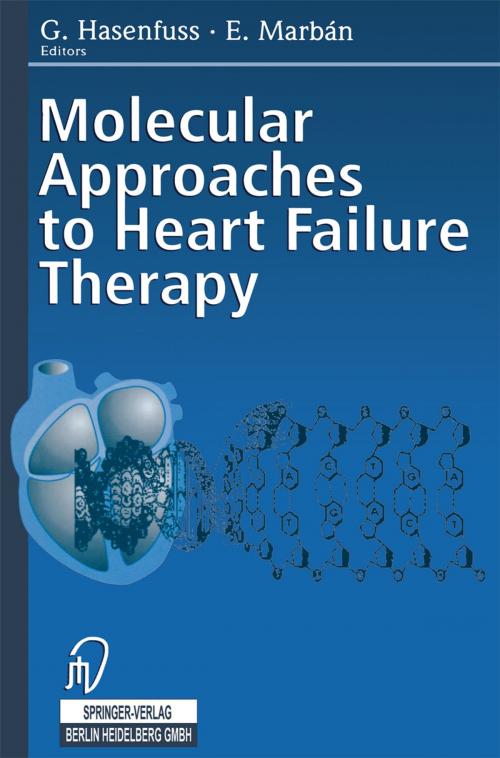Molecular Approaches to Heart Failure Therapy
Nonfiction, Science & Nature, Science, Other Sciences, Molecular Biology, Health & Well Being, Medical, Specialties, Internal Medicine, Cardiology| Author: | ISBN: | 9783642577109 | |
| Publisher: | Steinkopff | Publication: | December 6, 2012 |
| Imprint: | Steinkopff | Language: | English |
| Author: | |
| ISBN: | 9783642577109 |
| Publisher: | Steinkopff |
| Publication: | December 6, 2012 |
| Imprint: | Steinkopff |
| Language: | English |
G. HASENFUSS, E. MARBAN Heart failure embodies the central irony of modern medicine. As we have become increasingly adept at treating the major proximate causes of death in Western society, we have effectively converted acute illness into chronic malady. The last twenty years have witnessed a revolution in the treatment of acute coronary syndromes, myocardial infarction in particular. Patients who reach the hospital now have every expectation of leaving alive, but not necessarily well. Our ability to blunt the edge of ischemic insults has en gendered new problems: a new cohort of patients whose hearts function well enough to enable short-term survival, but at the cost of decreased ex ercise tolerance, dyspnea and increased long-term mortality. The irony is compounded by our increasingly sophisticated pharmacopeia for the treat ment of heart failure, which, by slowing the progression of ventricular dys function, has created a chronic illness. The fact of its chronicity makes heart failure no less deadly. In symptomatic patients, mortality exceeds 5-10% per year even with the best contemporary therapy. Not all heart failure is ischemic, of course, but the final common phenotype is eerily concordant regardless of the proximate cause. No wonder, then, that heart failure is the leading cause of hospitalization in America and in Western Europe and that the prevalence of the disease continues to rise. Drugs have indeed revolutionized heart failure therapy, ACE inhibitors and beta-adrenergic blockers having the most outstanding records to date.
G. HASENFUSS, E. MARBAN Heart failure embodies the central irony of modern medicine. As we have become increasingly adept at treating the major proximate causes of death in Western society, we have effectively converted acute illness into chronic malady. The last twenty years have witnessed a revolution in the treatment of acute coronary syndromes, myocardial infarction in particular. Patients who reach the hospital now have every expectation of leaving alive, but not necessarily well. Our ability to blunt the edge of ischemic insults has en gendered new problems: a new cohort of patients whose hearts function well enough to enable short-term survival, but at the cost of decreased ex ercise tolerance, dyspnea and increased long-term mortality. The irony is compounded by our increasingly sophisticated pharmacopeia for the treat ment of heart failure, which, by slowing the progression of ventricular dys function, has created a chronic illness. The fact of its chronicity makes heart failure no less deadly. In symptomatic patients, mortality exceeds 5-10% per year even with the best contemporary therapy. Not all heart failure is ischemic, of course, but the final common phenotype is eerily concordant regardless of the proximate cause. No wonder, then, that heart failure is the leading cause of hospitalization in America and in Western Europe and that the prevalence of the disease continues to rise. Drugs have indeed revolutionized heart failure therapy, ACE inhibitors and beta-adrenergic blockers having the most outstanding records to date.















